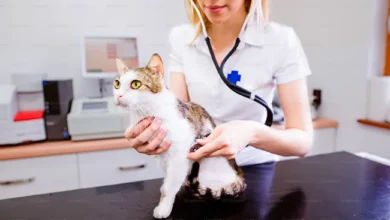
Pet ownership comes with a lot of responsibilities, including protecting your furry friend’s health.
As a result, pet insurance is becoming increasingly popular among pet owners, allowing them to have peace of mind and financial protection when it comes to their pet’s health.
However, with so many different pet insurance policies available, it can be challenging to determine which policy is the right fit for your pet.
In this blog post, we will discuss the key factors to consider when comparing pet insurance policies, including coverage, deductibles, premiums, exclusions, and customer service.
By understanding these factors, you will be able to make an informed decision about the best pet insurance policy for your furry friend.
Coverage
When considering pet insurance policies, one of the most crucial factors to consider is the coverage provided by the policy.
It is essential to understand what is covered and what is not to ensure that you choose a policy that fits your pet’s needs and your budget.
1. Accident-Only Coverage:
Accident-only coverage provides financial protection for your pet in the event of an accident, such as a broken bone, poisoning, or swallowing a foreign object.
However, this policy does not cover illnesses or conditions that are not the direct result of an accident.
2. Accident and Illness Coverage:
Accident and illness coverage offers protection for your pet in case of accidents and illnesses.
This policy typically covers conditions such as cancer, diabetes, allergies, and infections.
However, be sure to read the policy carefully as there may be certain exclusions, such as pre-existing conditions.
3. Wellness and Preventative Care Coverage:
Some pet insurance policies also offer coverage for routine care, such as annual check-ups, vaccinations, flea and tick prevention, and dental care.
This coverage can be especially beneficial for puppies and kittens, who require more frequent veterinary visits.
4. Hereditary and Congenital Conditions:
Some breeds of dogs and cats are more prone to certain hereditary and congenital conditions, such as hip dysplasia, heart disease, or respiratory issues.
Some pet insurance policies may offer coverage for these conditions, but it is essential to verify that the policy covers any breed-specific conditions that your pet may be at risk of developing.
5. Alternative Treatments:
Alternative therapies such as acupuncture, chiropractic care, and physical therapy can be beneficial for pets with chronic pain or mobility issues.
Some pet insurance policies may offer coverage for alternative treatments, so it is worth checking if this is something that is important to you.
When comparing pet insurance policies, it is essential to understand the coverage offered.
By carefully reviewing the policy and understanding the coverage, you can choose a policy that best fits your pet’s needs and your budget.
Deductibles
Another essential factor to consider when comparing pet insurance policies is the deductible.
A deductible is the amount that you will have to pay out of pocket before your insurance coverage kicks in.
Some policies have a per-incident deductible, while others have an annual deductible.
Understanding the deductible structure of a policy is crucial to determining if it is the right fit for you and your pet.
1. Per-Incident Deductibles:
A per-incident deductible is the amount that you have to pay for each new illness or injury that your pet incurs.
For example, if your pet has an accident and needs medical treatment, you will have to pay the deductible before the insurance coverage starts.
If your pet has a different accident later in the year, you will have to pay the deductible again.
This type of deductible is beneficial for those who are concerned about the cost of multiple incidents in a single year.
2. Annual Deductibles:
An annual deductible is the amount that you have to pay for all the claims made in a year.
Once you have met the deductible for the year, the insurance coverage will kick in for the rest of the year.
This type of deductible is beneficial for those who do not want to worry about paying a deductible multiple times throughout the year.
3. Percentage-Based Deductibles:
Some pet insurance policies have a percentage-based deductible, where you pay a percentage of the total cost of each claim instead of a fixed dollar amount.
This type of deductible can be beneficial if you have a large claim but can be more costly if you have multiple smaller claims.
4. High Deductible Plans:
Another type of pet insurance policy is a high deductible plan.
With this type of plan, you pay a higher deductible but have a lower monthly premium.
This type of plan is beneficial for those who want coverage but want to keep their monthly costs low.
When comparing pet insurance policies, it is important to understand the deductible structure of each policy.
By understanding the deductible structure, you can choose a policy that best fits your budget and your pet’s needs.
Premiums
The premium is the amount you pay for your pet insurance policy, usually on a monthly or yearly basis.
The premium is one of the most important factors to consider when comparing pet insurance policies, as it directly affects your budget and the level of coverage you can afford.
1. Factors Affecting Premiums:
Several factors can affect the cost of your pet insurance premiums, including the type of coverage, the deductible, the age of your pet, the breed of your pet, and your location.
In general, policies that offer more comprehensive coverage and lower deductibles will have higher premiums.
Similarly, older pets, purebred pets, and pets living in areas with higher veterinary costs may have higher premiums.
2. Choosing the Right Premium:
When comparing pet insurance policies, it is essential to choose a premium that fits your budget and provides the level of coverage you need.
Consider your pet’s age, breed, and health history when choosing a policy, as these factors can affect the likelihood of needing veterinary care.
Also, consider the deductible and coverage limits of each policy and choose one that fits your budget and covers the treatments and services that you are most likely to need.
When comparing pet insurance policies, it is important to choose a premium that fits your budget while providing the coverage you need.
By carefully considering, you can choose a pet insurance policy that provides the protection your pet needs at a price you can afford.
Exclusions
When comparing pet insurance policies, it is essential to understand what is excluded from the coverage.
Exclusions are the specific treatments or services that the policy will not cover, and it is important to know them to avoid surprises and unexpected costs in the future.
1. Common Exclusions:
The most common exclusions in pet insurance policies include pre-existing conditions, routine and preventative care, breeding and pregnancy-related expenses, and behavioural issues.
2. Other Exclusions:
Some policies may not cover certain surgeries for older pets, while others may exclude conditions that are common in specific breeds.
It is important to carefully read the policy documents to understand any specific exclusions that may apply to your pet.
3. Understanding Exclusions:
Understanding the exclusions of a pet insurance policy is just as important as understanding what is covered.
Make sure to read the policy documents carefully and ask questions to the insurance provider if anything is unclear.
You should also keep in mind that exclusions can vary widely between different policies and providers, so it is essential to compare policies to find the one that best fits your needs.
When comparing pet insurance policies, it is important to understand what is excluded from the coverage. Understanding exclusions is essential to avoid surprises and unexpected costs in the future.
Customer Service
Finally, when comparing pet insurance policies, consider the customer service provided by each company.
Look for a company with a good reputation for customer service and a track record of quickly and efficiently processing claims.
You want to know that you can rely on your pet insurance company to be there for you when you need them.
Conclusion
Comparing pet insurance policies can be overwhelming, but by considering the factors discussed above, you can make an informed decision about the best policy for your pet.
Remember to carefully read the policy, understand the coverage, deductibles, premiums, exclusions, and customer service.
With the right pet insurance policy, you can provide your furry friend with the best care possible without breaking the bank.



